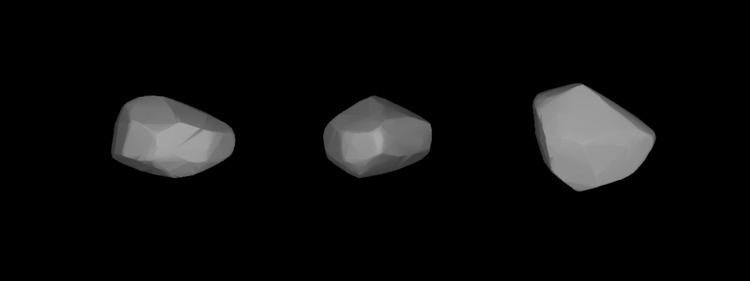Discovered by S. Arend MPC designation 1263 Varsavia Minor planet category main-belt · (middle) Absolute magnitude 10.5 | Discovery date 23 March 1933 Alternative names 1933 FF · 1948 PB1 Discovered 23 March 1933 Orbits Sun Asteroid group Asteroid belt | |
 | ||
Discovery site Royal Observatory of Belgium Similar 1286 Banachiewicza, 306 Unitas, 276 Adelheid, 302 Clarissa, 167 Urda | ||
1263 Varsavia, provisional designation 1933 FF, is an asteroid from the middle region of the asteroid belt, approximately 40 kilometers in diameter. It was discovered on 23 March 1933, by Belgian astronomer Sylvain Arend at Uccle Observatory in Belgium. It is named for the city of Warsaw.
Description
Varsavia is classified as a metallic X-type in the Tholen taxonomy. In the SMASS classification, it is a transitional metallic–carbonaceous Xc-type. It orbits the Sun at a distance of 2.2–3.2 AU once every 4 years and 4 months (1,589 days). Its orbit has an eccentricity of 0.19 and an inclination of 29° with respect to the ecliptic. As no precoveries were taken, and no prior identifications were made, the body's observation arc begins with its official discovery observation at Uccle in 1933.
In April 2003, the first rotational light-curve of Varsavia was obtained by American astronomer Brian Warner at his Palmer Divide Station in Colorado. Revised data gave a well-defined rotation period of 7.1639 hours with a brightness variation of 0.15 magnitude (U=3). Another well defined period of 7.1680 hours (Δ0.15 mag) was derived from photometric observations taken by Australian astronomer Julian Oey at Leura Observatory in February 2011 (U=3). Concurring results were also obtained by Robert Stephens in April 2003 (7.231 h; Δ0.15 mag; U=2), and from the Palomar Transient Factory in June 2012 (7.1659 h; Δ0.28 mag; U=2). The most recent light curve was obtained by the "Spanish Photometric Asteroid Analysis Group" (OBAS) in May 2016, which gave a period of 7.163 hours with an amplitude of 0.12 magnitude (U=3-).
According to the surveys carried out by the Infrared Astronomical Satellite IRAS, the Japanese Akari satellite, and NASA's Wide-field Infrared Survey Explorer with its subsequent NEOWISE mission, Varsavia measures between 34.15 and 51.44 kilometers in diameter, and its surface has an albedo between 0.042 and 0.10. The Collaborative Asteroid Lightcurve Link derives an albedo of 0.0874 and adopts a diameter of 41 kilometers, obtained from modeled data and a directly observed minor planet occultation of a star.
This minor planet was named by Tadeusz Banachiewicz after the Latin name of the city of Warsaw, capital of Poland. The naming citation includes a note of thanks for the support given by the city's observatory. Naming citation was first published in German by Astronomisches Rechen-Institut (RI 843).
